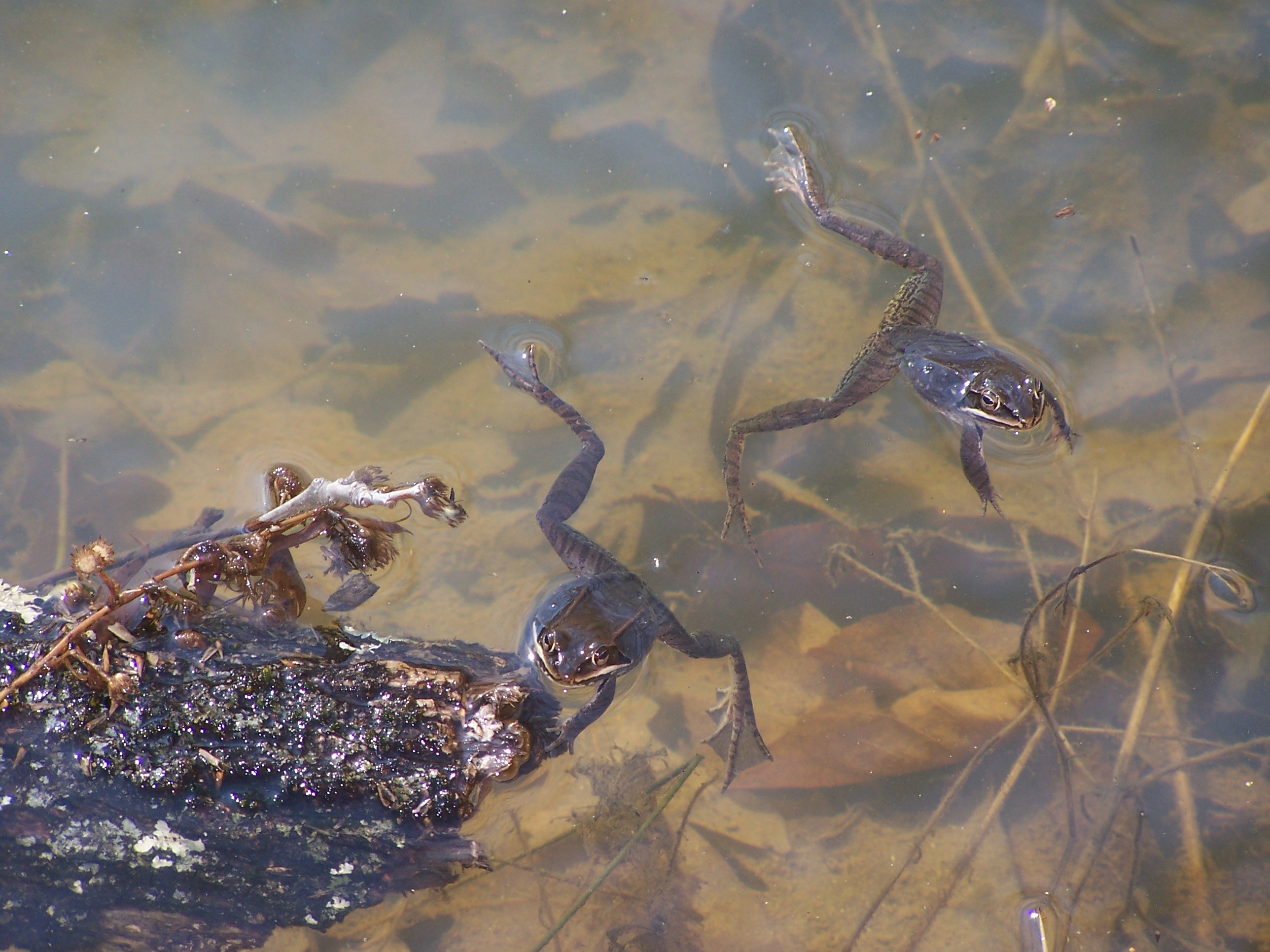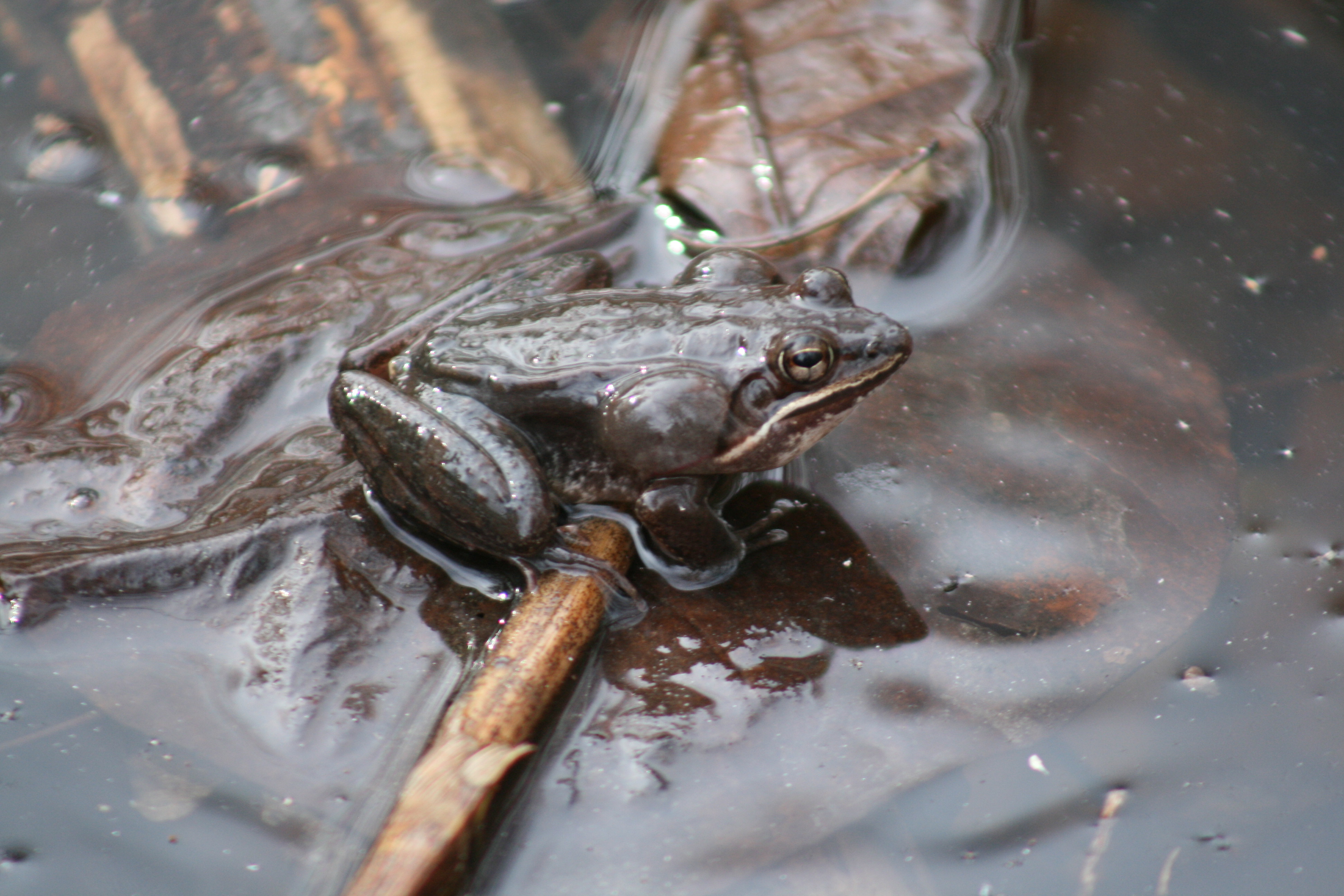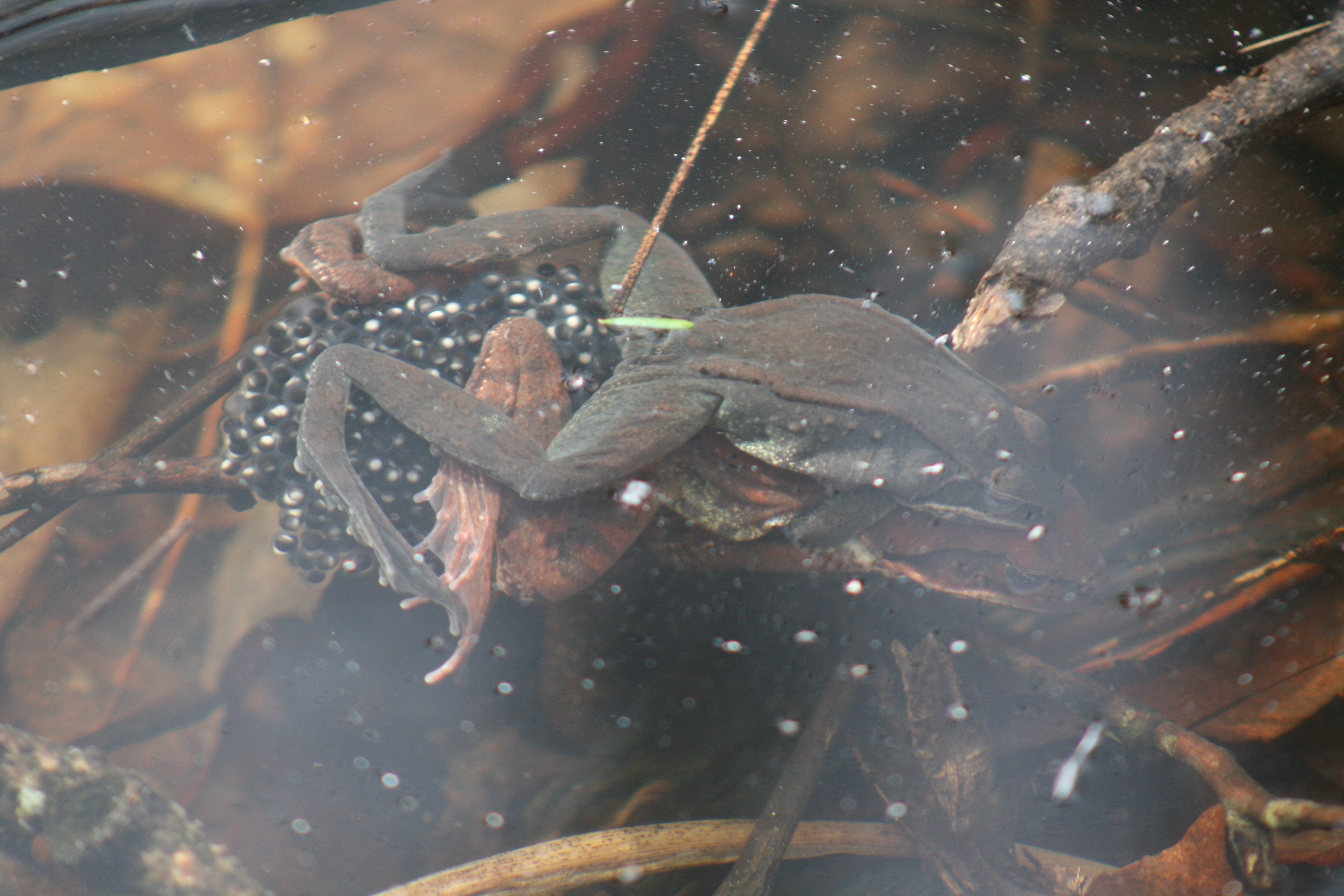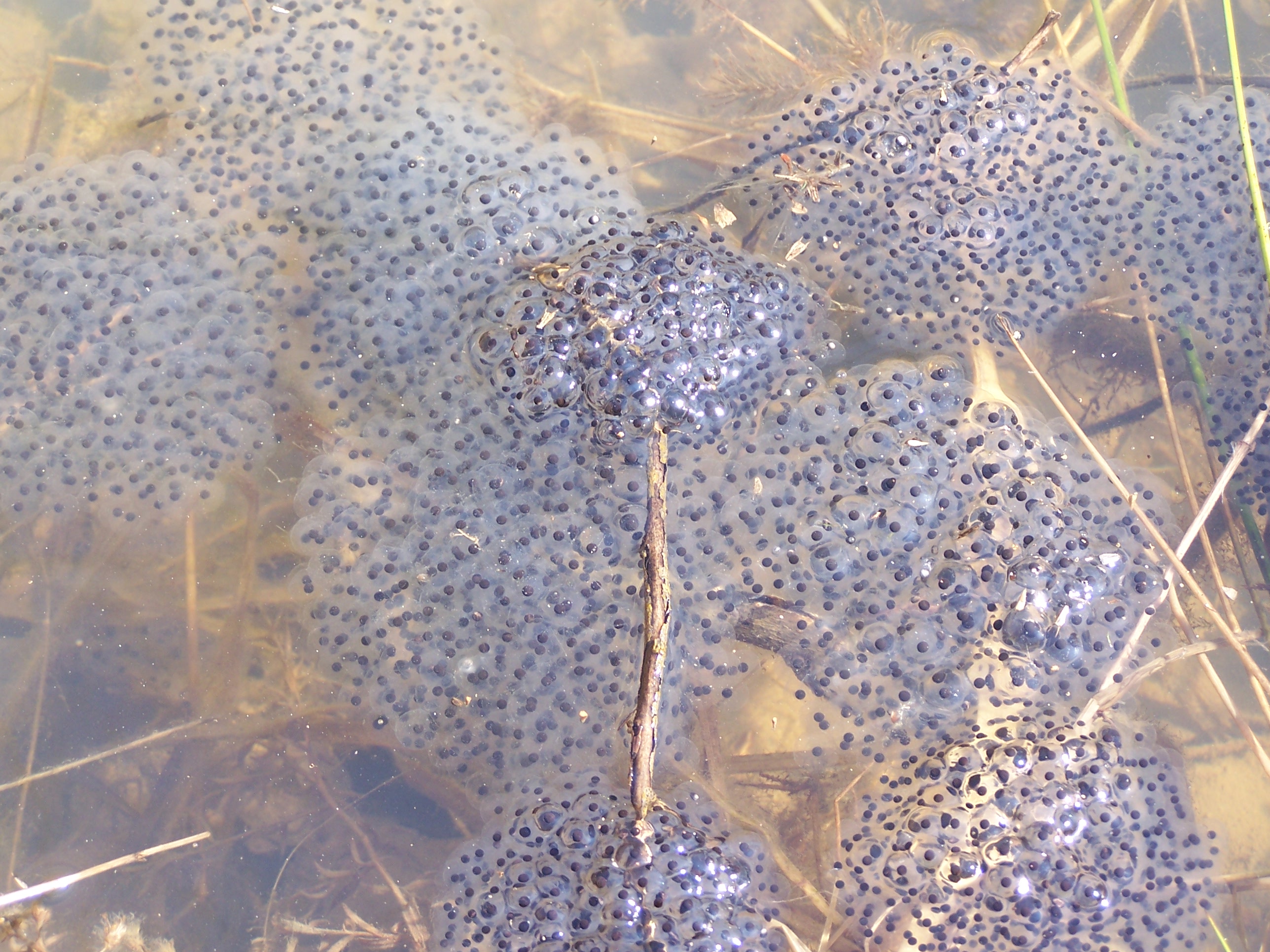The Wood Frogs Have Emerged!
Published on February 24, 2017
If you are near a small pond or vernal pool (temporary body of water that typically dries up during the summer) during the next week, you may hear quite a commotion.
Wood Frogs (Lithobates sylvaticus) have emerged from their winter hiding places to mate. While some frogs, like the American Bullfrog and Green Frog, will call all summer long, Wood Frogs only call and mate during a narrow window of time in early spring. They are usually the first amphibians to emerge, congregating in shallow ponds and vernal pools in large numbers. Frog enthusiasts await that first evening in February or March when the temperature will be 50 degrees or higher, with wet or rainy conditions to herald the beginning of the frogs’ movement. It is not uncommon to hear a male Wood Frog calling from a pond still partially covered with ice.


Males arrive first, floating on the surface and calling. The call of a Wood Frog is raspy and sounds like the quacking of a duck, especially in a large chorus. Instead of one large vocal sac that makes their throat look like they swallowed a tennis ball, Wood Frogs have two separate vocal sacs called paired lateral vocal sacs. The vocal sacs act as resonating chambers, magnifying the sound so it will travel farther. Even with two vocal sacs, the Wood Frog’s call does not travel very far. This does not seem to be a negative factor in the crowded conditions of a typical Wood Frog chorus.

Female Wood Frogs do not call. Instead of showing up with a lot of noise, the females show up with a lot of eggs. The heavy, almost bloated appearance of the female above indicates she is gravid, or full of eggs. Notice the pavement background in the photo above. Wood Frogs live in leaf litter and under logs and rocks in forested areas, not necessarily close to water. Some will travel significant distances to reach a suitable body of water to mate.


When a male finds a female they engage in a mating behavior called amplexus. This behavior is important for Wood Frogs, because like most frogs they fertilize externally. When the eggs come in contact with water they immediately begin to swell and absorb the water. Once the eggs swell, fertilization would no longer be possible. The male needs add his sperm to the female’s eggs as soon as she releases them, and this is accomplished through the amplexus position. The male clasps the female under the armpits from behind. Once in amplexus, the male stimulates the female to release her eggs, while simultaneously releasing his sperm. The male typically will not let go until the female has released her eggs. It is not uncommon to see several males clasping the same female, or to see a male attempting amplexus with another species of frog, toad or even salamander.


Wood Frog eggs look very different when they are first laid (pictured at left) versus when they have been in the water for a couple of days (pictured at right). The small eggs are attached to a twig or other submerged structure so they will not drift. The egg jelly (albumen) swells on contact with water. Since egg masses can contain as many as 2,000 eggs, it is beneficial that the eggs be as compact as possible while still inside the female’s body. The “inflated” egg jelly protects the eggs from physical injury, drying up and may also have anti-bacterial and anti-fungal properties.

The embryos can easily be viewed, because Wood Frog eggs are so large. With some magnification, one can even view the development of the embryo.

These eggs are just hours from hatching, and you can easily make out the shape of the new tadpoles inside. Once the eggs are laid, the adults leave the water to return to their forest home. The soon-to-be-hatched tadpoles are on their own. These tadpoles eat plant matter voraciously, and develop quickly into adults.

With each egg mass numbering in the thousands, this would surely seem to be a recipe for overpopulation. With no parental care, however, Wood Frogs lay large amounts of eggs in the hopes that a few survive. One scientific study followed Wood Frog egg masses to adulthood, and found that survivorship was only 4%. The good news is that the hundreds of frogs you currently hear “quacking” survived those odds, and have returned to produce one of the truly great spring spectacles!